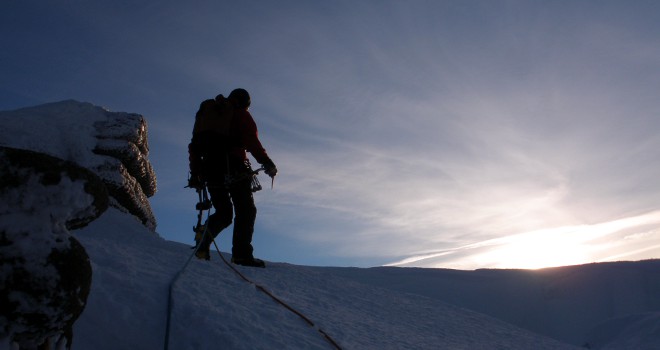A list of necessary equipment for all our UK Winter courses.
| Rucsac | A rucsac of around 45/50 litres with ice axe attachment points should suffice for all courses. A waterproof liner should also be used. |
| Waterproofs | A good set of sturdy waterproofs is required. It is essential that the trousers can be put on while wearing boots. The jacket should have a large hood. |
| Boots | It is important that the boots you choose to wear do not have a very flexible sole as these will not take a crampon. Please check prior to the start of the course that the crampons and boots are compatible. Boots can be hired in Fort William and Aviemore. |
| Gaiters | Should be worn with the boots. |
| Helmets | Helmets will be required at some point on all courses. If you do not have one please let us know beforehand and we will provide one. |
| Clothing | It is essential to carry at least two very warm pairs of gloves or mitts and two warm hats. Appropriate socks and thermals should be worn with a fleece or synthetic layer on top. A spare fleece or synthetic layer should be carried. |
| Crampons | The crampons should be compatible with your chosen boots and have front points. Clip-on crampons are easier to use in poor weather. These can be hired in Fort William and Aviemore. |
| Ice Axe | Winter skills and winter mountaineering courses will require a general mountaineering axe. Climbing courses will require an axe and hammer. These can be borrowed (please let us know in advance) or hired in Fort William and Aviemore. |
| Harness | Required for winter mountaineering and climbing courses. Please let us know if you need to borrow this item. |
| Bivvy Bag | Every participant must carry at least a large survival bag. |
| Eyewear | Ski goggles should be carried for poor weather and sunglasses for bright winter days. |
| Misc. | Each participant will also require a headtorch, compass, map, lunch and a drink. Hot drinks are more comforting in winter. |



